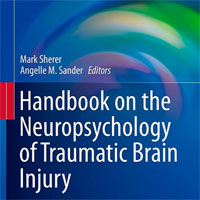Tag: antibiotics
Global multicenter observational investigator initiated study
The DIANA study is a large multicenter cohort study, lead by intensive care unit experts out of the University Hospital Ghent. This investigator initiated study will collect a large amount of data from multiple centers and... read more
Bad news for sepsis-3.0: qSOFA fails validation
Sepsis 3.0 replaced the SIRS criteria with a new risk-stratification tool, qSOFA. qSOFA was initially developed within the Sepsis-3 publication itself. Until now, qSOFA has never been validated. The value of qSOFA vs. SIRS... read more
Disruption of the microbiota across multiple body sites in critically ill children
Microbiota in critically ill children differs sharply from the microbiota of healthy children and adults. Acknowledgement of dysbiosis associated with critical illness could provide opportunities to modulate the microbiota... read more
Antibiotic Resistance just became more complex
Bacteria that are susceptible to antibiotics can survive when enough resistant cells around them are expressing an antibiotic-deactivating factor. This new take on how the microbial context can compromise antibiotic therapy.... read more
Tackling Antimicrobial Resistance
Antimicrobial resistance happens when bugs, like bacteria, fungi or viruses, change, or evolve, when they’re exposed to drugs, like antibiotics, antifungals, or antivirals. Bugs that develop antimicrobial resistance are... read more
Bacteriophages may harbor antibiotic resistance genes
Scientists at the Catalan Institute for Water Research have carried out a comprehensive analysis of several viromes from different habitats to explore whether bacteriophages (viruses that infect bacteria) harbor antibiotic... read more
Mild electric e-scaffold disrupts bacterial biofilms
Researchers at Washington State University (Spokane, WA, USA) used an e-scaffold made out of conductive carbon fabric and a mild electrical current to produce a low, constant concentration of hydrogen peroxide (H2O2, an effective... read more
Non-antibiotic treatments for bacterial diseases in an antibiotic resistance era
The progressive spread of antibiotic resistance genes is forcing us to reconsider our treatment options against some bacterial pathogens. Treating bacterial infections will likely become more challenging in the future. We... read more
Plazomicin Succeeds in Phase 3 cUTI and CRE Trial
Plazomicin an antibiotic being developed to fight multidrug-resistant bacterial infections, has met the primary objective of noninferiority compared with meropenem in a phase 3 registration trial among patients with complicated... read more
Antibiotic therapy advances in the critically ill
Key issues related to antibiotic management in the critically ill, including problems associated with timing, duration, and dosing of antibiotics. The authors highlighted the importance of early diagnosis of infection and... read more
Researchers develop novel wound-healing technology
A WSU research team has successfully used a mild electric current to take on and beat drug-resistant bacterial infections, a technology that may eventually be used to treat chronic wound infections.... read more
Adherence to guidelines reduces catheter-associated UTIs
Adherence to CDC guidelines for the placement, maintenance and removal of catheters and American College of Critical Care Medicine and Infectious Disease Society of America guidelines for evaluating fever in a critically... read more
How to prevent spread of the skin infection impetigo
Impetigo is a contagious skin infection that's preventable and can be treated with antibiotics, the U.S. Food and Drug Administration says. Impetigo can strike anytime but is more common during warm weather months. More... read more
Study Examines Rates, Causes of ED Visits for Adverse Drug Events
The prevalence of emergency department (ED) visits for adverse drug events (ADEs) in the United States was estimated to be four per 1,000 individuals in 2013 and 2014, and the most common drug classes involved were anticoagulants,... read more
Bacteriophages cure bacterial infections
Phage therapy may be a solution to treating infections caused by antibiotic-resistant bacteria. Since 2013, researchers at the University of Helsinki in Finland have collected bacteriophages to combat antibiotic-resistant... read more
New Screening Test Identifies Potential Therapies to Fight Drug-Resistant Bacteria
Researchers at the NCATS and NIAID have found a new way to identify drugs and drug combinations that may potentially be useful in combating infections that are resistant to antibiotics. The researchers used the test to screen... read more
Antibiotics Linked to Sepsis Risk
Disturbing healthy bacteria during hospital admission associated with later sepsis.... read more
Scrubs Pick Up Bad Hospital Germs
The scrubs of intensive care unit (ICU) nurses often pick up disease-causing germs, including those resistant to antibiotics, a new study reports. The study included 40 intensive care unit nurses.... read more
Inappropriate Antibiotic Selection Among US Ambulatory Care Visits
This study measures the frequency with which first-line antibiotics are prescribed for otitis media, sinusitis, and pharyngitis.... read more
Bacterial molecule trains the immune system to tolerate infection without inducing illness
Pathogen infection has been considered to have one of two general outcomes - either the infected organism develops some level of illness or its immune system fights off and eliminates the invading pathogen.... read more
Adjunctive azithromycin reduces risk of non-elective cesarean post-operative infection: The C/SOAP trial
Women receiving azithromycin in addition to standard antibiotic prophylaxis for cesarean section (c-section) were 49% less likely to develop endometritis and postoperative wound infections compared to those who received only... read more
Beta-Lactam Infusion in Severe Sepsis (BLISS)
Beta-Lactam Infusion in Severe Sepsis (BLISS): a prospective, two-centre, open-labelled randomised controlled trial of continuous versus intermittent beta-lactam infusion in critically ill patients with severe sepsis.... read more









